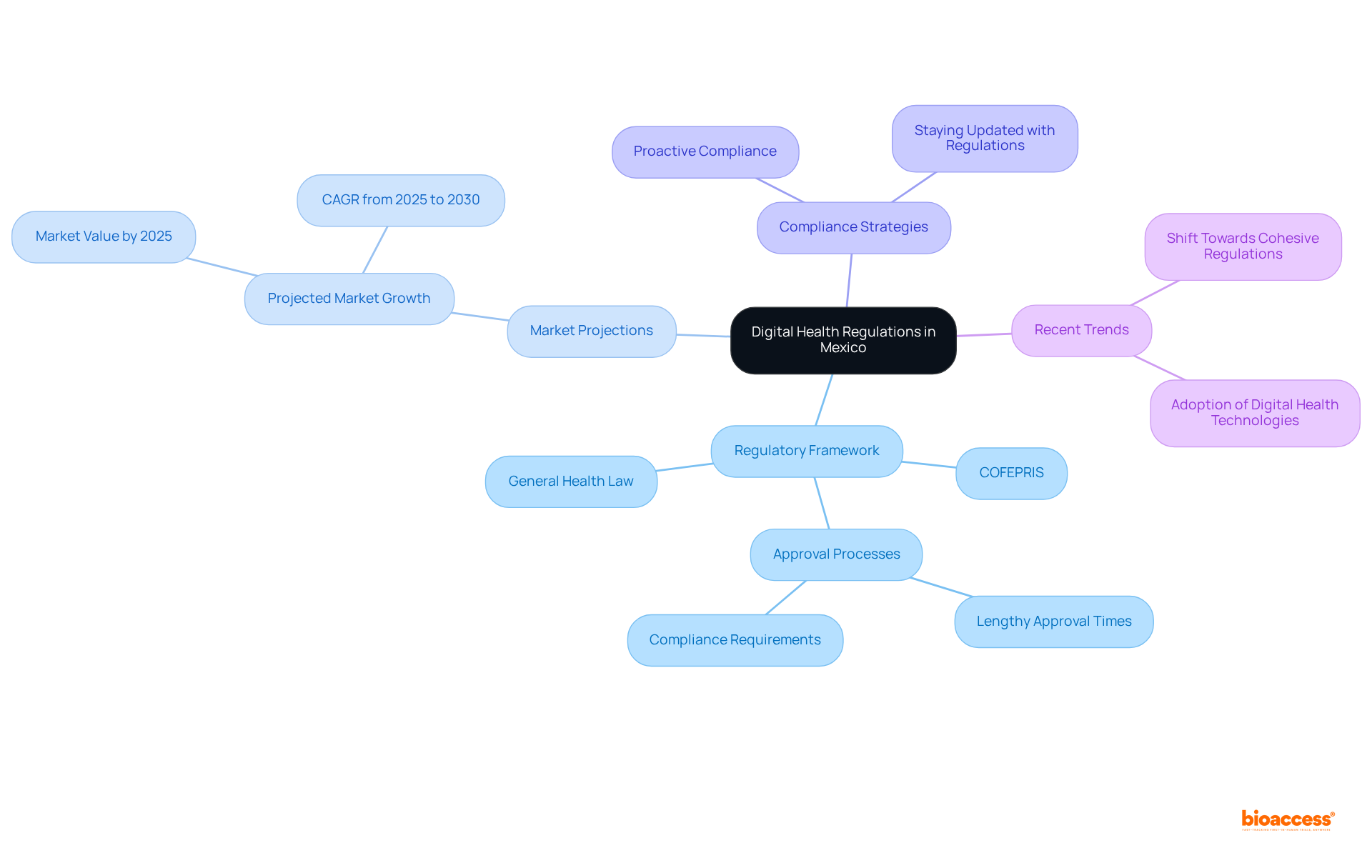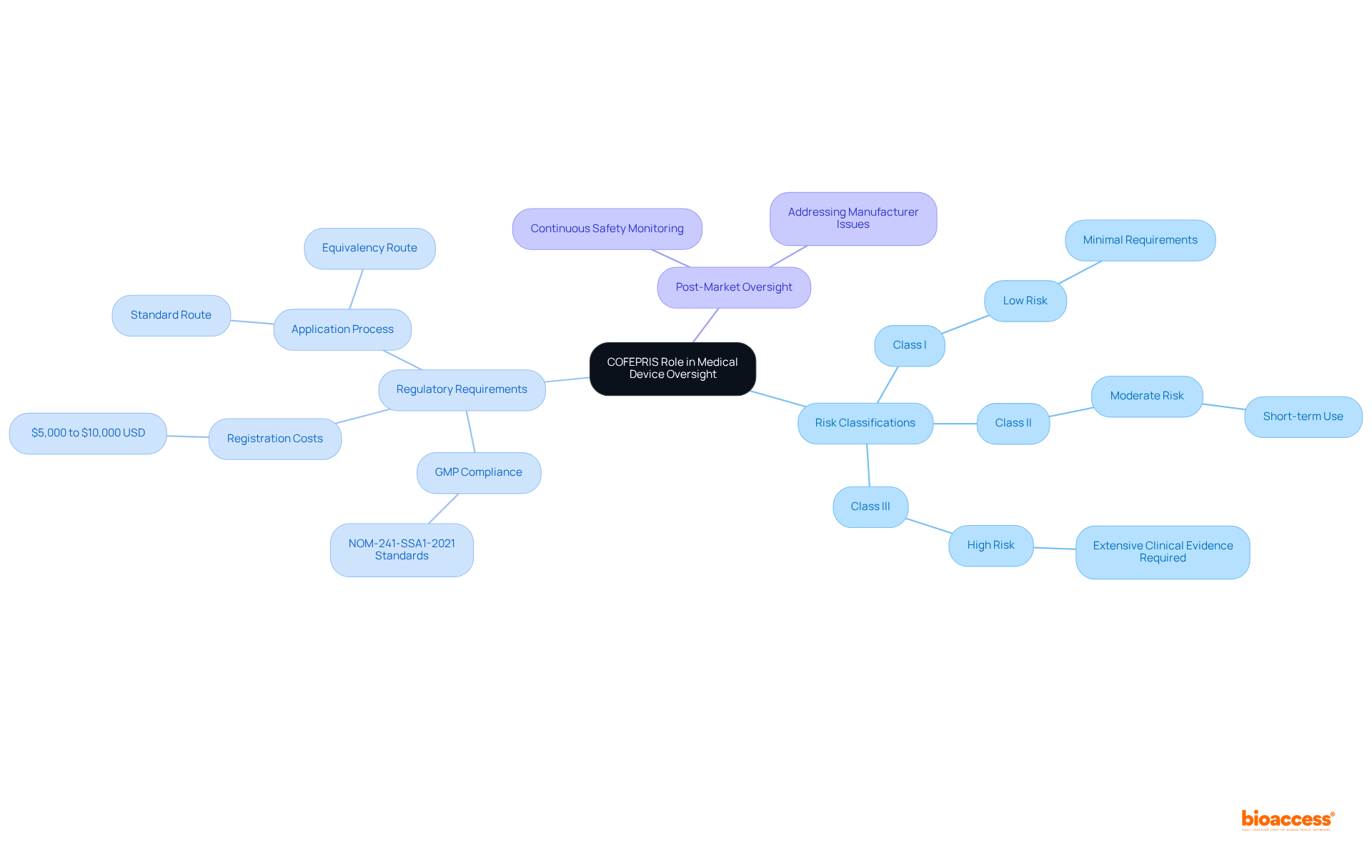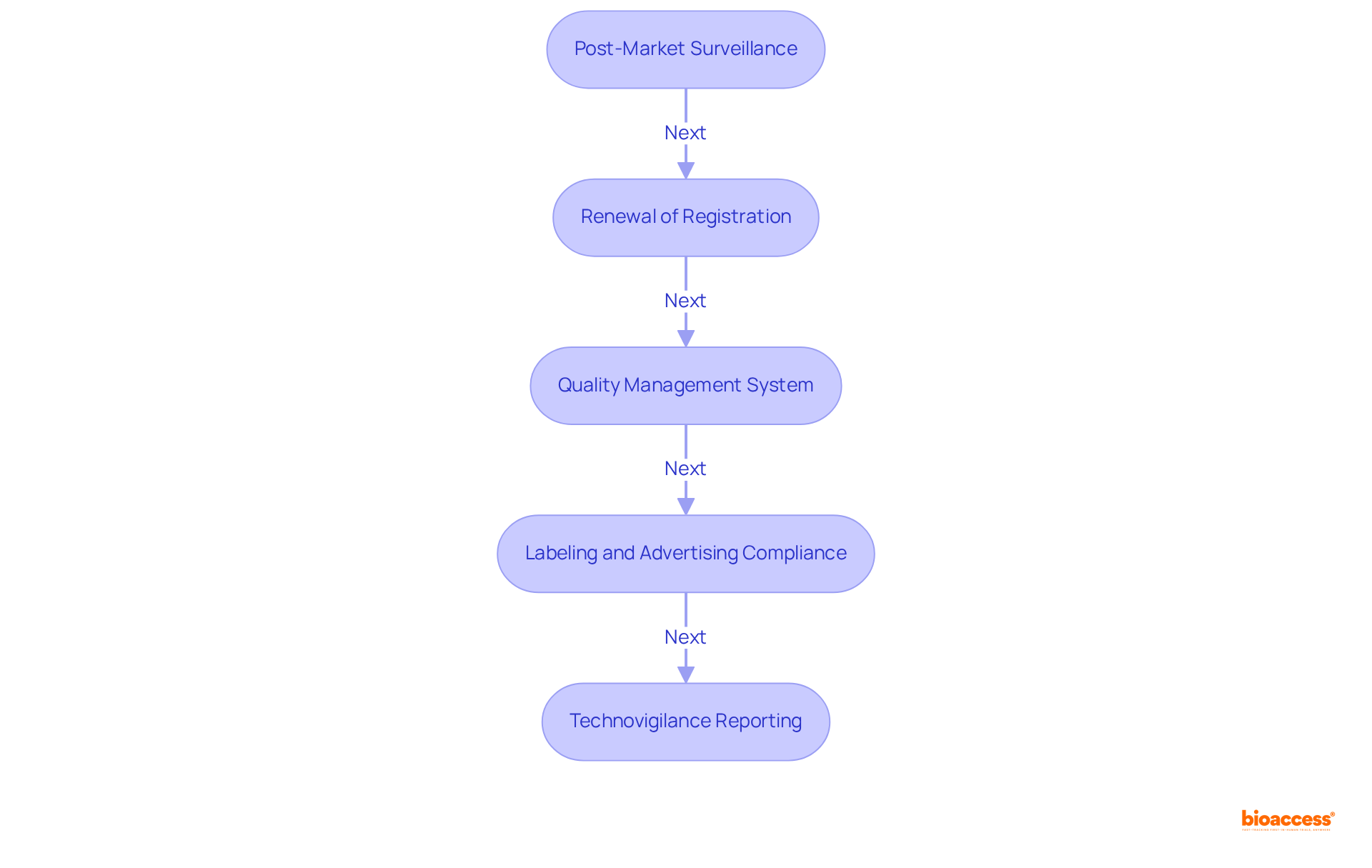


This article examines the regulatory framework governing digital health devices in Mexico, with a primary focus on the pivotal role of COFEPRIS in ensuring the safety and compliance of medical equipment. It delineates the classification system for these devices, the registration process, and the post-registration obligations that manufacturers must adhere to. The emphasis is placed on the necessity for manufacturers to adeptly navigate the complex regulations to successfully enter and thrive in the expanding digital health market. Understanding these regulations is crucial for stakeholders aiming to capitalize on the burgeoning opportunities within this sector.
Navigating the intricate landscape of digital health regulations in Mexico is crucial for companies aiming to introduce innovative healthcare solutions. With the medical devices market projected to soar to USD 7.49 billion by 2025, understanding the regulatory framework enforced by COFEPRIS becomes essential for compliance and market entry.
However, the lengthy approval processes and evolving guidelines present significant challenges that can hinder timely access to this burgeoning sector.
How can manufacturers effectively maneuver through these complexities to ensure their products not only meet safety standards but also capitalize on the growing demand for digital health solutions?
In Mexico, the digital health device rules are governed by the General Health Law, with enforcement by the Federal Commission for Protection against Sanitary Risks (COFEPRIS). This regulatory framework addresses critical areas such as:
As of 2024, the authorization procedure for healthcare instruments has garnered attention due to its prolonged timeframes, often causing significant delays for newcomers. Notably, the medical devices market is projected to reach USD 7.49 billion by 2025, reflecting the increasing demand for innovative healthcare solutions.
Despite these challenges, recent trends indicate a shift towards more cohesive regulations that adapt to rapid technological advancements. Companies must remain vigilant and informed about the latest updates in digital health device rules Mexico to ensure compliance and meet the necessary safety and efficacy standards.
Successful compliance examples from innovative companies navigating the regulatory landscape effectively underscore the importance of aligning with relevant guidelines. This proactive approach not only facilitates market entry but also enhances the overall credibility of digital health solutions within the expanding healthcare industry.
Furthermore, the anticipated compound annual growth rate (CAGR) of 22.9% from 2025 to 2030 for the digital health market highlights the imperative for companies to address regulatory challenges while seizing market opportunities.

COFEPRIS, the regulatory authority in Mexico, plays a pivotal role in ensuring the safety, quality, and effectiveness of medical equipment. It assesses products according to a risk classification system that organizes items into three categories:
This classification is essential, as it determines the regulatory pathway and requirements for each type of equipment. For instance, Class I items, which pose minimal risk, have less stringent requirements compared to Class III items that require extensive clinical evidence and adherence to rigorous standards.
The agency mandates that all healthcare instruments comply with established standards, including Good Manufacturing Practices (GMP) as specified in NOM-241-SSA1-2021, prior to being sold. This ensures that only safe and effective products reach consumers. Additionally, COFEPRIS is actively engaged in post-market oversight, tracking the continuous safety and effectiveness of products once they are utilized. Such oversight is critical for identifying potential issues and ensuring that manufacturers address them promptly.
Recent regulatory changes have sought to simplify COFEPRIS's procedures, enhancing its efficiency in supervising healthcare instruments. These adjustments have improved the availability of safe and effective healthcare products while fostering local economic growth. However, challenges persist, including the need for manufacturers to navigate complex application processes and the potential for delays due to deficiency letters, which can significantly extend resolution times, with worst-case scenarios for standard route submissions reaching up to 26 months.
The expense to register a healthcare product in Mexico typically ranges from $5,000 to $10,000 USD, excluding additional testing and certification costs. Understanding the digital health device rules in Mexico and the regulatory framework of the Mexican health authority is essential for Medtech companies seeking prompt market access in Mexico. By aligning with COFEPRIS's requirements and leveraging its evolving regulatory landscape, manufacturers can ensure compliance and contribute to the overall safety of medical products in the market.

Determine Classification: Begin by identifying the risk classification of your apparatus, which falls into one of three categories: Class I (low risk), Class II (medium risk), or Class III (high risk). Class I devices typically have faster review and approval times compared to higher classes. This classification is crucial as it dictates the specific registration requirements and timelines.
Prepare Technical Dossier: Compile a detailed technical dossier that includes essential components such as product specifications, clinical data, labeling information, and proof of compliance with applicable standards, notably ISO 13485. A well-prepared dossier is essential for a successful submission to the regulatory authority.
According to the digital health device rules Mexico, foreign manufacturers must appoint a local authorized representative in Mexico. This representative will facilitate communication with the health authority and manage the registration process, ensuring compliance with the digital health device rules Mexico.
Submit your application along with the technical dossier to the relevant authority. It is imperative that all documents are translated into Spanish and adhere to the specific requirements set forth by the agency to avoid delays. Note that registration fees for Class I items are $650 USD.
Await Evaluation: COFEPRIS will conduct a thorough review of your application. The assessment duration can differ greatly, generally spanning from 3 to 8 months, based on the classification of the equipment and the intricacy of the submission. Producers must also adhere to Good Manufacturing Practices (GMP) for medical equipment registration in the country.
Receive Approval: After a successful assessment, the regulatory body will issue a registration certificate, granting you the authority to market your product in Mexico. It is vital to track renewal dates and meet any post-market responsibilities, including monitoring and reporting adverse events related to your products, to ensure compliance. The validity of medical equipment registration with the health authority is 5 years and can be renewed if no significant changes take place.

Following the registration obtained from COFEPRIS, manufacturers are required to comply with several critical post-registration obligations:
Post-Market Surveillance: It is essential to establish a robust system for monitoring the safety and performance of the product in the marketplace. This includes the obligation to notify relevant authorities of any adverse incidents or product defects.
Renewal of Registration: Typically, medical equipment registrations are valid for five years. Manufacturers must proactively submit renewal applications, accompanied by updated documentation and any new clinical data as mandated.
Quality Management System: An effective quality management system that aligns with ISO 13485 or equivalent standards must be maintained. Regulatory agencies may conduct regular audits to ensure adherence to these standards.
Labeling and Advertising Compliance: It is imperative that all product labeling and advertising materials conform to COFEPRIS regulations, ensuring accurate representations of the product's capabilities and intended use.
Technovigilance Reporting: A technovigilance system must be established to monitor and report any incidents related to the device, ensuring that corrective measures are implemented as necessary.

Navigating the landscape of digital health device regulations in Mexico is essential for companies aiming to enter this rapidly growing market. The framework established by COFEPRIS under the General Health Law not only ensures the safety and efficacy of medical devices but also highlights the need for manufacturers to stay informed and compliant with evolving regulations. As the digital health market is projected to expand significantly, understanding these rules becomes a critical component for success.
Key insights from the article emphasize the importance of:
Companies must recognize the complexities inherent in the registration process, from initial classification to ongoing obligations such as post-market surveillance and quality management. By following the outlined steps and adhering to COFEPRIS's requirements, manufacturers can facilitate smoother market entry and enhance their credibility within the healthcare sector.
Ultimately, the significance of mastering digital health device regulations in Mexico cannot be overstated. As the market continues to evolve, proactive engagement with regulatory requirements will not only mitigate risks but also position companies to capitalize on emerging opportunities. Embracing these regulations is not merely a legal obligation; it is a pathway to fostering innovation and ensuring that safe, effective healthcare solutions reach those in need.
What governs digital health regulations in Mexico?
Digital health regulations in Mexico are governed by the General Health Law, with enforcement by the Federal Commission for Protection against Sanitary Risks (COFEPRIS).
What critical areas do the digital health device rules address?
The digital health device rules address the categorization of healthcare instruments, data protection, and the approval processes for healthcare instruments.
What challenges are associated with the authorization procedure for healthcare instruments in Mexico?
The authorization procedure for healthcare instruments has garnered attention due to its prolonged timeframes, often causing significant delays for newcomers to the market.
What is the projected market size for medical devices in Mexico by 2025?
The medical devices market in Mexico is projected to reach USD 7.49 billion by 2025.
How are regulations adapting to technological advancements in digital health?
Recent trends indicate a shift towards more cohesive regulations that adapt to rapid technological advancements, requiring companies to stay informed about updates in digital health device rules.
Why is compliance with digital health regulations important for companies?
Successful compliance with digital health regulations facilitates market entry and enhances the overall credibility of digital health solutions within the healthcare industry.
What is the anticipated growth rate for the digital health market from 2025 to 2030?
The anticipated compound annual growth rate (CAGR) for the digital health market from 2025 to 2030 is 22.9%.